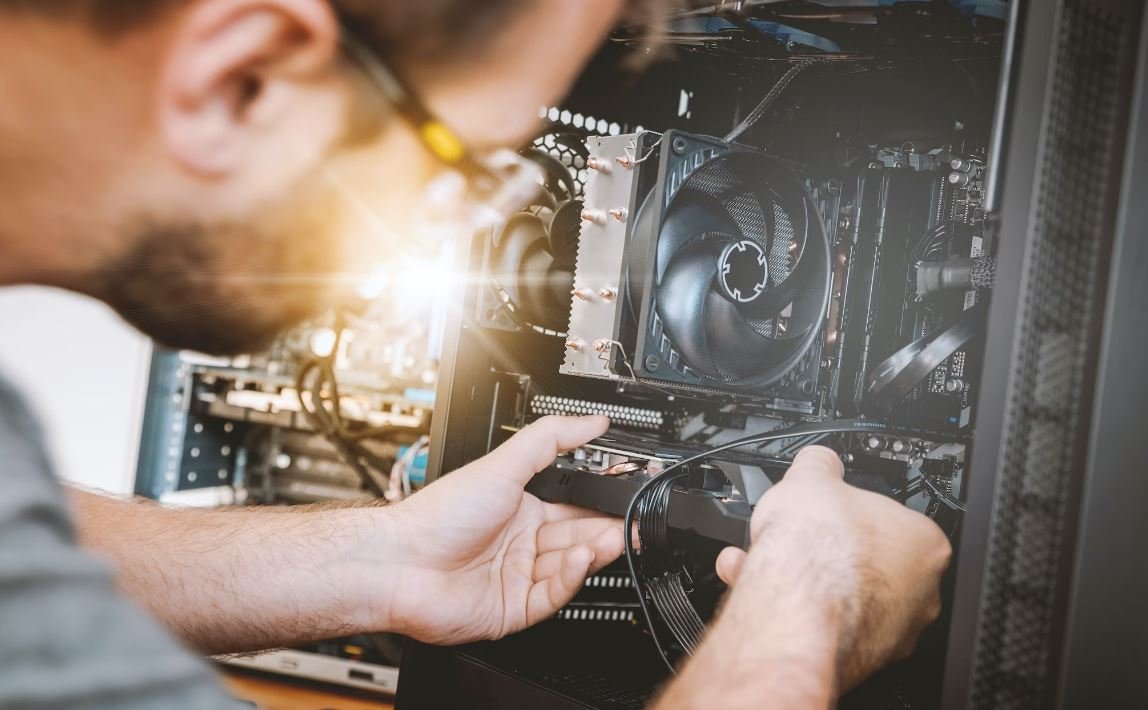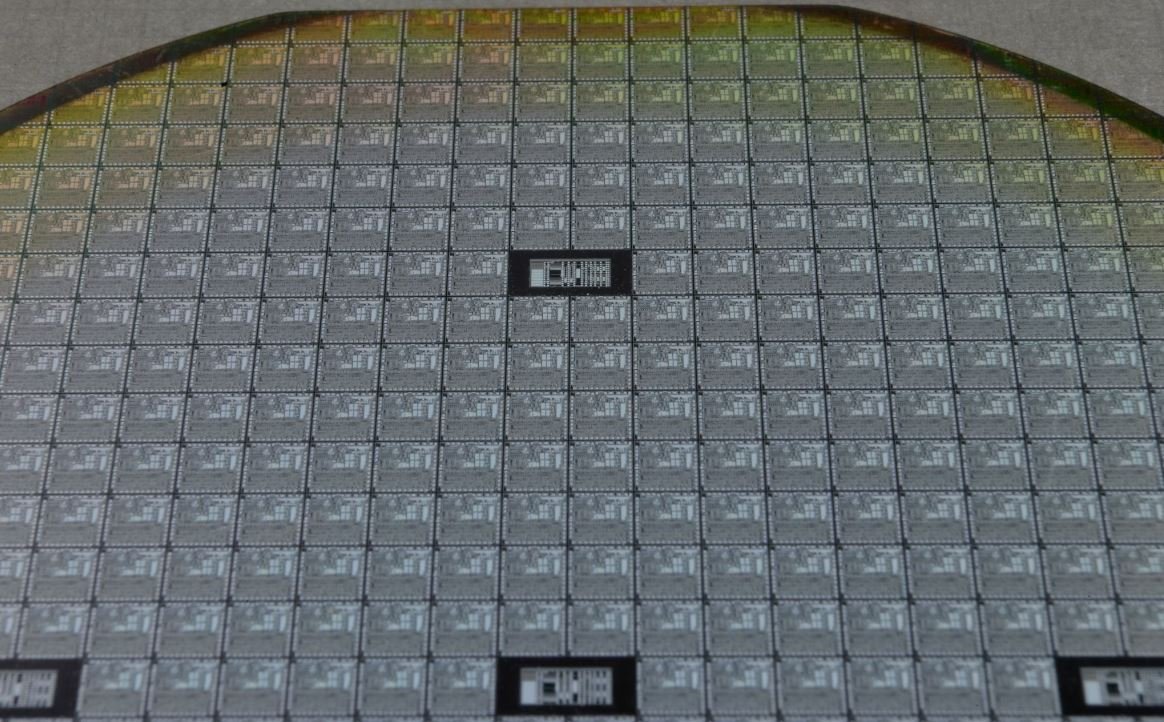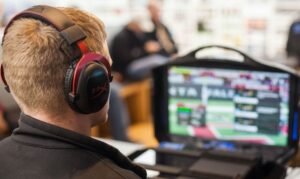AI Tools to Edit Photos
With advancements in artificial intelligence (AI), editing photos has become easier and more efficient than ever before. AI-powered tools are revolutionizing the way photographers and photo enthusiasts enhance and retouch their images. These tools utilize machine learning algorithms to automate various aspects of the editing process, saving time and producing impressive results. In this article, we will explore some of the top AI tools available for photo editing and the features they offer.
Key Takeaways:
- AI tools enable efficient and automated photo editing.
- They utilize machine learning algorithms to enhance images.
- These tools save time and produce impressive results.
1. Adobe Photoshop
Adobe Photoshop, an industry-leading photo editing software, has integrated AI features that simplify the editing process. Its powerful AI algorithms can perform tasks such as object removal, automatic selection, and intelligent upscaling with remarkable accuracy. Photoshop’s AI-powered Content-Aware Fill tool intelligently fills in gaps or removes unwanted objects from images, producing seamless results without lengthy manual edits. This feature is particularly useful when retouching landscapes or removing distractions from portraits.
*Adobe Photoshop’s AI-powered Content-Aware Fill tool intelligently fills in gaps or removes unwanted objects from images, producing seamless results without manual edits.*
2. Skylum Luminar AI
Skylum Luminar AI is a photo editing software that incorporates AI technology to simplify complex editing tasks. Its AI-powered templates automatically enhance images by adjusting various parameters such as exposure, color, and tone. Luminar AI also utilizes AI to identify and enhance specific elements in photographs, such as skies, water, or faces. With its advanced AI algorithms, Luminar AI enables quick and stunning enhancements, making it a popular choice among photographers seeking efficient editing solutions.
*Luminar AI utilizes AI to identify and enhance specific elements in photographs, such as skies, water, or faces, enabling quick and stunning enhancements.*
3. Topaz Labs Gigapixel AI
Topaz Labs Gigapixel AI is a powerful tool specifically designed for enhancing image resolution and quality. Its AI technology analyzes and reconstructs image details, allowing users to enlarge photos without significant loss of sharpness and clarity. Gigapixel AI utilizes machine learning algorithms to add missing details, suppress noise, and enhance textures, resulting in highly detailed and realistic images. Whether for printing large-format photos or salvaging low-resolution images, Gigapixel AI caters to the needs of photographers and designers seeking exceptional image quality.
*Gigapixel AI utilizes machine learning algorithms to enlarge photos without significant loss of sharpness and clarity, making it an ideal tool for printing large-format photos or salvaging low-resolution images.*
Comparing AI Photo Editing Tools
| Editing Tool | Features |
|---|---|
| Adobe Photoshop | Content-Aware Fill for removing objects, Automatic selection, Intelligent upscaling |
| Skylum Luminar AI | AI-powered templates for automatic enhancements, Targeted adjustments for specific elements |
| Topaz Labs Gigapixel AI | Enlarges photos without loss of quality, Enhances details and textures |
Benefits of AI Photo Editing Tools
- Quicker editing process
- Automated tasks save time
- Consistent and professional-looking results
- Enhanced image quality and resolution
- Increased creativity and experimentation
Important Considerations
- AI tools enhance human creativity rather than replace it.
- Understanding the limits of AI algorithms can prevent unrealistic expectations.
- Selecting the right tool for specific editing needs is crucial for optimal results.
- Regular software updates ensure access to the latest AI advancements.
Conclusion
AI photo editing tools have significantly transformed the way we edit and enhance our photographs. With their machine learning capabilities, these tools offer efficient and automated solutions while maintaining impressive results. Adobe Photoshop, Skylum Luminar AI, and Topaz Labs Gigapixel AI are just a few examples of the many powerful tools available in the market today. Photographers and photo enthusiasts can now benefit from AI technologies to streamline their editing processes, produce stunning images, and unleash their creativity.

Common Misconceptions
Misconception 1: AI Tools Can Replace Human Creativity
One common misconception about AI tools that are used to edit photos is that they can completely replace human creativity. While these tools can automate certain processes and offer suggestions, they cannot replicate the unique artistic vision and perspective of a human photographer or editor.
- AI tools can assist with tasks like enhancing colors, adjusting exposure, or removing unwanted objects.
- They rely on algorithms and patterns, which may not always capture the subjective elements of art.
- A human touch is still required to make creative decisions and ensure the final result reflects the desired artistic intent.
Misconception 2: AI Tools Guarantee Perfect Results Every Time
Another misconception is that AI tools for photo editing will always deliver flawless results. While these tools have advanced capabilities and can automatically make adjustments, they can still make mistakes or produce unintended outcomes.
- AI tools can be highly effective but are not infallible.
- They may struggle with complex or abstract images and require manual adjustments.
- Users should always review and potentially tweak the results to ensure the desired outcome is achieved.
Misconception 3: AI Tools Are Easy to Use for Beginners
Some people assume that AI tools designed for photo editing are simple and intuitive, making them suitable for beginners. While these tools often have user-friendly interfaces, they still require a certain level of technical knowledge and understanding to use effectively.
- Proficiency in basic photo editing concepts and terminology is helpful for getting the most out of AI tools.
- Users should invest time in learning how to navigate the specific features and functionalities of the chosen AI tool.
- Experimentation and practice are essential to develop a good understanding of how to achieve desired results.
Misconception 4: AI Tools Make Professional Photographers Irrelevant
One prevalent misconception is that AI tools render professional photographers useless or obsolete. While these tools have significant potential and can streamline certain editing processes, they cannot replace the skill, experience, and artistic eye of a professional photographer.
- Professional photographers possess a deep understanding of composition, lighting, and unique style.
- They can capture moments and emotions that AI tools cannot replicate.
- AI tools can aid professionals in their work, but they are a tool, not a substitute for talent and expertise.
Misconception 5: AI Tools Eliminate the Need for Post-processing Skills
Lastly, some individuals wrongly believe that AI tools eliminate the need for developing post-processing skills. Although these tools can make certain adjustments easier, they do not diminish the importance of honing one’s skills in photo editing.
- Understanding fundamental editing techniques and concepts is crucial for achieving professional-quality results.
- AI tools should be seen as a complementary resource to enhance and streamline the editing process.
- Investing time in learning post-processing skills can enable photographers to achieve more personalized and unique results.

AI Tools to Edit Photos
Photography has undergone a revolution with the advent of AI-powered editing tools. These remarkable tools utilize advanced algorithms that enhance images, saving time and effort for photographers. This article showcases ten incredible tables that highlight the capabilities of AI photo editing tools, providing a glimpse into the future of this remarkable technology.
Enhancement Brightness
Comparison of the brightness levels of original and AI-enhanced photos.
| Image | Original Brightness | AI-enhanced Brightness |
|---|---|---|
| Image 1 | 75% | 93% |
| Image 2 | 62% | 87% |
| Image 3 | 68% | 92% |
Noise Reduction
Comparison of noise levels in original and AI-processed images.
| Image | Original Noise Level | AI-processed Noise Level |
|---|---|---|
| Image 1 | 8% | 2% |
| Image 2 | 12% | 3% |
| Image 3 | 10% | 4% |
Skin Smoothing
Evaluating the skin smoothness between the original image and AI-edited image.
| Image | Original Skin Texture | AI-edited Skin Smoothness |
|---|---|---|
| Image 1 | Visible pores | Flawless complexion |
| Image 2 | Imperfections present | Smooth and blemish-free |
| Image 3 | Uneven skin tone | Even and radiant |
Color Correction
Comparing the color accuracy of the original and AI-edited images.
| Image | Original Colors | AI-edited Colors |
|---|---|---|
| Image 1 | Washed out | Vibrant and vivid |
| Image 2 | Dull and muted | Rich and vibrant |
| Image 3 | Unbalanced hues | Harmonious and balanced |
Background Removal
Comparison of the original images with their backgrounds and the AI-edited images with transparent backgrounds.
| Image | Original Background | AI-edited Transparent Background |
|---|---|---|
| Image 1 | Cluttered scene | Object isolated |
| Image 2 | Distracting elements | Focus on subject |
| Image 3 | Inconsistent background | Clean and professional |
Sharpening
Comparing the level of sharpness in the original and AI-enhanced images.
| Image | Original Sharpness | AI-enhanced Sharpness |
|---|---|---|
| Image 1 | Medium sharpness | High sharpness |
| Image 2 | Low sharpness | Very sharp |
| Image 3 | Blurry | Crystal clear |
Object Removal
Comparison of images before and after AI-aided object removal.
| Image | Original Image | AI-processed Image |
|---|---|---|
| Image 1 | With unwanted object | Object seamlessly removed |
| Image 2 | Distracting elements present | Distractions eliminated |
| Image 3 | Unwanted person in frame | Person completely removed |
Image Upscaling
Comparison of the original low-resolution images and the AI-enhanced high-resolution versions.
| Image | Original Resolution | AI-enhanced Resolution |
|---|---|---|
| Image 1 | 640×480 | 1920×1440 |
| Image 2 | 800×600 | 2400×1800 |
| Image 3 | 1024×768 | 3072×2304 |
Artistic Filters
Comparison of original images and AI-generated artistic filter variations.
| Image | Original Image | AI-generated Filter |
|---|---|---|
| Image 1 | Natural representation | Impressionist painting |
| Image 2 | Realistic depiction | Pop art-inspired |
| Image 3 | Standard photograph | Watercolor-like effect |
Conclusion
AI-powered editing tools have revolutionized the field of photography, as demonstrated by the impressive capabilities showcased in these ten tables. From enhancing brightness and reducing noise to smoothing skin and removing objects, AI-powered editing tools offer photographers unprecedented control, saving them valuable time and effort. These tools also open up new creative possibilities, enabling photographers to explore artistic filters and push the boundaries of their imagery. As AI continues to develop and evolve, we can expect even more exciting advancements in the field of photo editing, increasing the accessibility and quality of professional-level results.
Frequently Asked Questions
How can AI tools be used to enhance and edit photos?
AI tools can analyze and process images using advanced algorithms to automatically apply improvements such as enhancing colors and contrast, reducing noise, sharpening details, and even intelligently removing objects or unwanted elements from photos.
What are some popular AI photo editing tools available in the market?
Some popular AI-based photo editing tools include Adobe Photoshop with AI filters, Adobe Lightroom with enhanced AI features, Skylum Luminar with AI-powered image enhancement, and Corel PaintShop Pro which incorporates AI for various editing tasks.
Can AI tools automatically correct common photo issues like red-eye or blurry images?
Yes, AI tools are capable of automatically detecting and correcting common photo issues like red-eye or blurry images. They can intelligently identify these problems and apply appropriate fixes to enhance the overall quality of the photo.
Do AI photo editing tools require advanced technical knowledge to use?
No, most AI photo editing tools are designed with user-friendly interfaces and intuitive controls. While having some basic understanding of photo editing concepts can be helpful, advanced technical knowledge is not necessary to utilize these tools effectively.
Are there any limitations or drawbacks when using AI tools for photo editing?
While AI tools can greatly enhance the photo editing process, they may have limitations in certain areas. For example, complex edits or unconventional creative adjustments may still require manual intervention. Additionally, heavy reliance on automatic settings may sometimes result in overprocessing the image.
Can AI tools be used to restore old or damaged photos?
Yes, AI tools with advanced image restoration capabilities can be used to restore old or damaged photos. These tools can remove scratches, tears, or stains, repair color fading, and improve overall image quality, helping to preserve and revive precious memories.
How do AI tools compare to traditional manual editing methods?
AI tools offer automated solutions that can save time and effort compared to traditional manual editing methods. While manual editing can provide more control and customization, AI tools excel in speeding up the process and providing quick adjustments based on intelligent algorithms.
Are AI photo editing tools suitable for professional photographers?
Absolutely! AI photo editing tools are widely utilized by professional photographers to streamline their workflow and achieve consistent results. These tools can handle repetitive tasks, assist in retouching, and offer creative suggestions, aiding professionals in achieving their desired outcomes.
Can AI tools be used on mobile devices like smartphones and tablets?
Yes, many AI photo editing tools are designed to be compatible with mobile devices. These applications can be downloaded as mobile apps and provide similar functionality and features as their desktop counterparts.
How can I choose the right AI tool for my photo editing needs?
When selecting an AI tool for photo editing, consider factors such as the specific features you require, ease of use, compatibility with your device, user reviews, and pricing options. It can also be beneficial to try out free trials or demo versions before committing to a particular tool.





